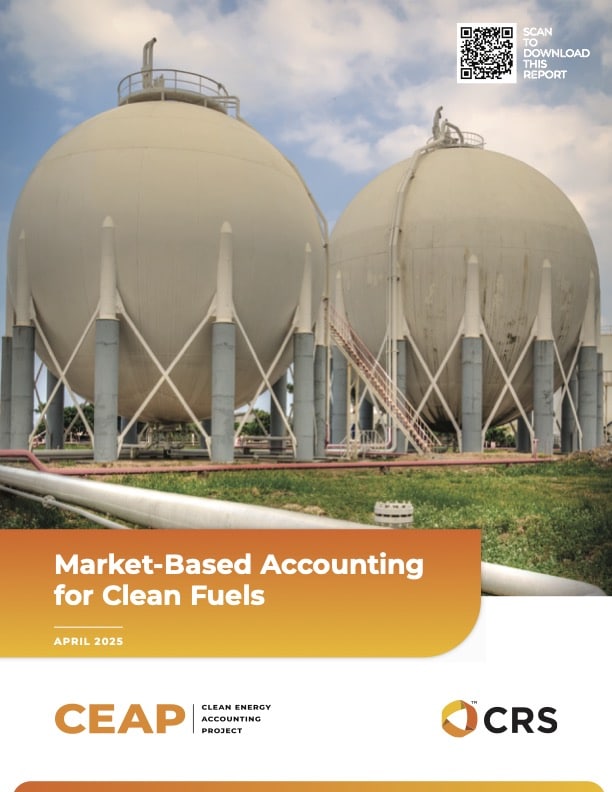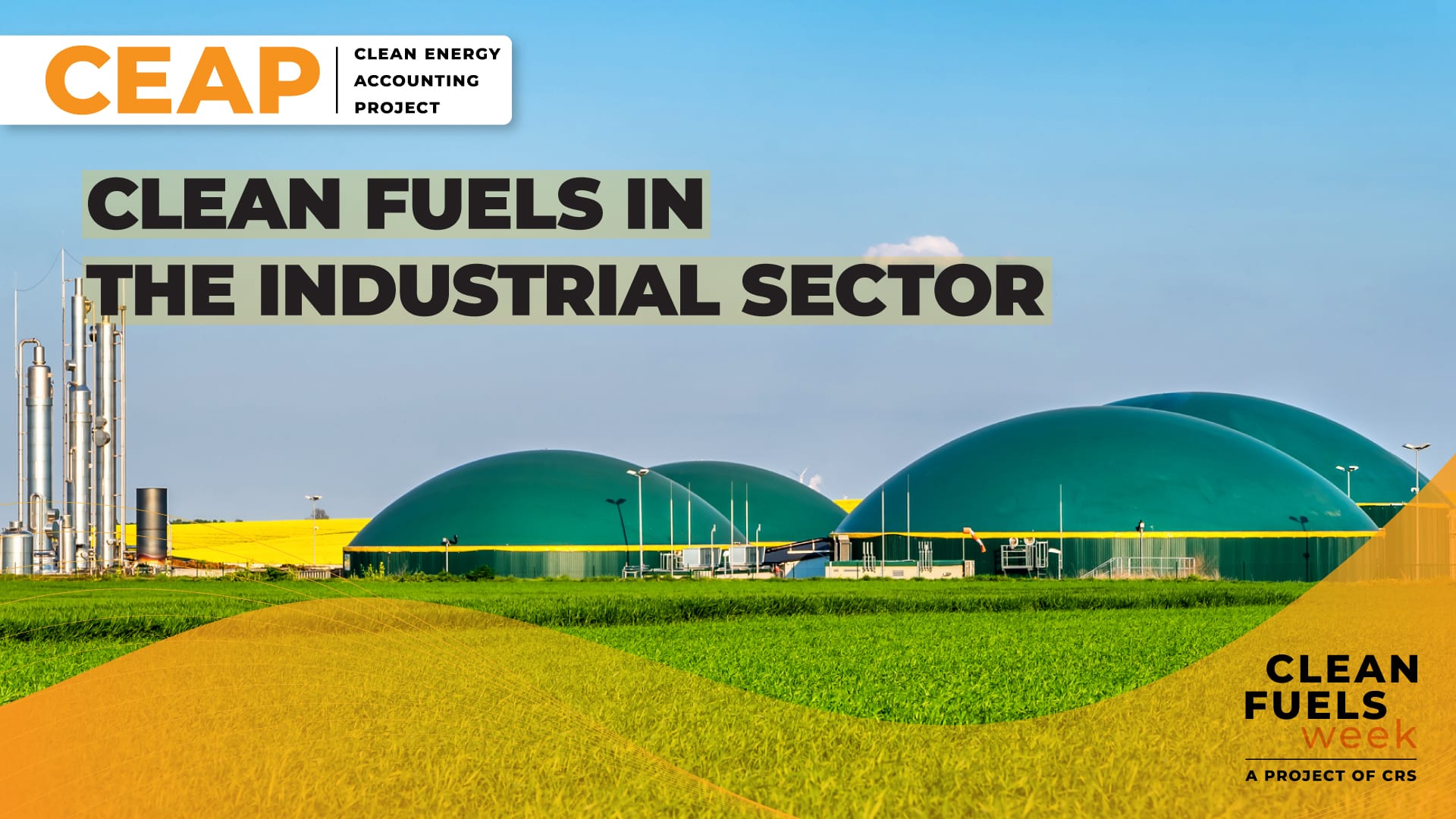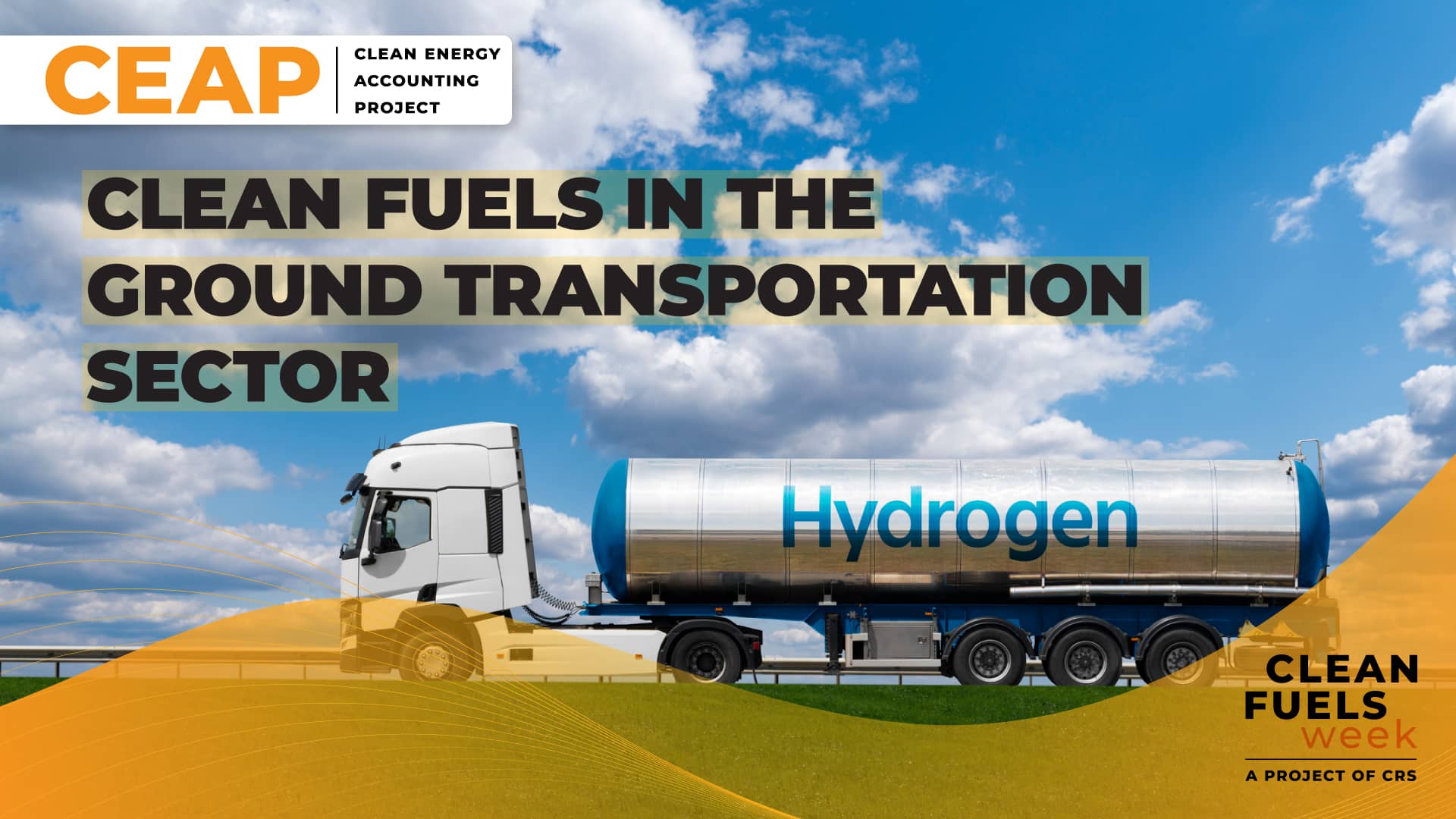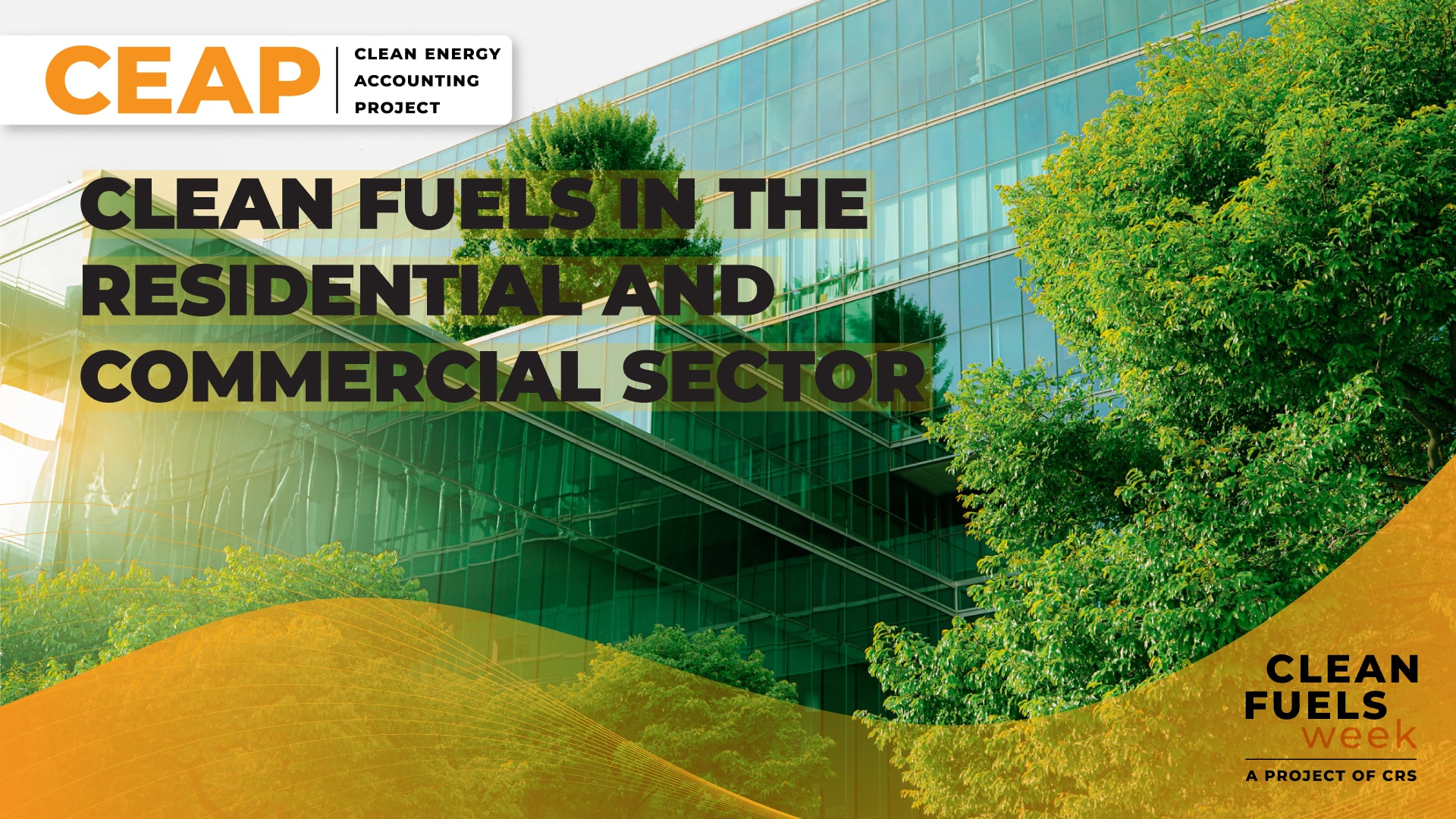Market-Based Accounting for Clean Fuels
Author(s): CRS Staff
Date: April 21st, 2025 | Report | 31 Pages
Markets for clean fuels including biomethane, sustainable aviation fuels, and green hydrogen are evolving from ideas to realities. Utilizing the GHG Protocol’s Scope 2 Guidance as a model, this CEAP initiative will define a series of globally applicable market-based quality criteria for clean fuels that are sufficiently rigorous to support credible use claims as well as market-based direct emissions calculation guidance consistent with the principles and existing attributional accounting framework of the GHG Protocol Corporate Standard.
Fuel producers and their customers concerned with managing the greenhouse gas (GHG) emissions from using fuels are pursuing ways to replace conventional fossil fuels with biologically derived and lower-emitting alternative fuels. To help spur investment in the production of these nascent fuels, these stakeholders are using markets for contractual instruments like certificates representing the environmental attributes of clean fuels. Current GHG accounting frameworks, however, do not include clear rules addressing how companies should use these instruments when calculating and reporting their emissions inventories.
This report presents consensus recommendations to help companies who purchase contractual instruments for clean fuels attribute GHG emissions within their reported emissions inventories. Recommendations adhere to principles of the GHG Protocol Corporate Standard, including those published in the Protocol’s Scope 2 Guidance. The report establishes a series of quality criteria for contractual instruments for any fuel type, no matter where or how the fuel is used. Applying the criteria in real conditions may entail future sector-specific or fuel-specific guidance.
Any organization that buys or sells contractual instruments for clean fuels and wants to account for their emissions under the GHG Protocol or a program based on the GHG Protocol’s Corporate Standard will value this report as interim guidance until the GHG Protocol and other official standard setters provide more definitive direction.
Webinar
During this webinar, a panel of experts walked through the nine quality criteria outlined in CEAP’s guidance that contractual instruments must meet to support credible claims related to the direct emissions from clean fuel use. Panelists shared practical, real-world examples illustrating how these criteria are applied in practice. A moderated discussion followed, exploring the implications of the guidance for existing markets, reporting frameworks, and decarbonization strategies across different sectors.
Whether you’re involved in GHG reporting, fuel procurement, or shaping the future of clean fuel markets, this webinar offers actionable insights on how to ensure clean fuel purchases support credible use claims and more accurate emissions accounting.
Additional Resources
Market-Based Accounting for Clean Fuels Initiative Proposal
Background Reports
Aviation contributes significantly to global greenhouse gas emissions, and sustainable aviation fuels (SAFs) offer a promising pathway to decarbonize the industry. However, despite their potential, SAFs currently make up less than 0.1% of global aviation fuel.
The industrial sector has unique energy demands, often requiring high temperatures for manufacturing processes. Clean fuels like renewable hydrogen, geothermal energy, and renewable methanol are emerging as viable solutions. However, market-based accounting methodologies are still developing, making it challenging to track and trade these fuels effectively.
The ground transportation sector, which includes personal and public transportation, trucking, rail, and off-road vehicles, is seeing a surge in clean fuel options, from renewable hydrogen to biodiesel. These fuels offer the potential for significant emissions reductions, especially when integrated into existing vehicles and infrastructure. Our report outlines the current landscape, challenges in distribution, and the emerging market mechanisms that support the adoption of these fuels.
The residential and commercial sector contributes significantly to greenhouse gas (GHG) emissions. Heating and cooking are typically the main fuel consuming activities within the sector. There is increasing interest and support for clean fuels such as biomethane and bioLPG in this sector, evident from their adoption in countries like the UK and other European nations. Large corporations are also actively supporting the expansion of bioLPG. While there is a lack of comprehensive regulations and initiatives at the federal level, various U.S. states and regions are implementing programs to incentivize the adoption of clean fuels such as biomethane and green hydrogen.
The largest maritime shipping vessels consume a gallon of fuel every 15 feet. This prodigious consumption is one reason international shipping accounted for nearly 3% of global warming by 2018. The International Maritime Organization (IMO) is leading a global effort to reduce the carbon intensity of shipping by switching to low-carbon fuels and modernizing aging fleets. The European Union issued new regulations that adopt even more aggressive emission reduction targets, but which also implement several incentives that would complicate efforts to apply rigorous market-based accounting to a sector that has yet to see a voluntary market emerge.
Working Group
- 3Degrees
- Aspen Institute
- Center for Green Market Activation
- Clean Energy Fuels
- EcoEngineers
- European Renewable Gas Registry (ERGaR)
- Generate Capital
- GHG Protocol
- M-RETS
- Meta
- Molecule Group
- Renewable Natural Gas (RNG) Coalition
- Renewable Thermal Collaborative
- RMI
- Southern Company
- TES H2
- World Wildlife Fund (WWF) – U.S.





